The project 'To where it all began' is a collaboration of science and art, a match that compliments each field on having different perspectives. The collaboration output is featured as a two-piece continuous painting, which represents the connection between life on Earth and life on other planets. The energy emerging from the sides and corners of the artwork defines space and its infinity. Bright colours and dramatic movements represent life.
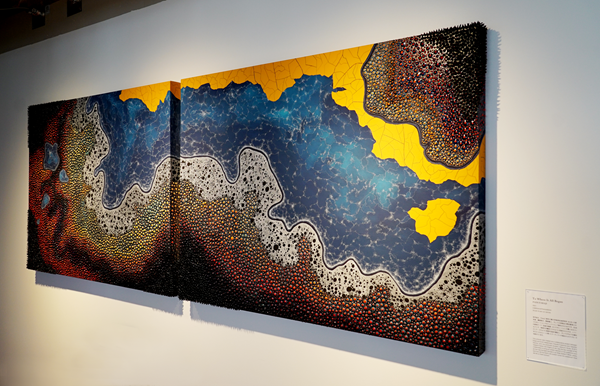
The project gathered two ELSI scientists and one ELSI graduate student from the field of astrobiology, and me, an artist, and coordinated by outreach experts at ELSI. Initially, I explored the concept of collaboration and the process with Thilina Heenatigala, a science communicator at ELSI, who initiated the project and was supported by Junko Nishikawa and Minako Shirakura, outreach officers at ELSI. We discussed how we'd be moving forward, means of understanding ELSI's astrobiology research, and visiting ELSI labs to get insights into the world of scientific research.
We kicked off the collaboration with a Zoom call with a team of experts from ELSI; two scientists, Kosuke Fujishima, Yasuhito Sekine, and one ELSI graduate student Natsumi Noda. It was an exciting entry into the science beyond the grasp of the physical world we live in, with a universe of unlimited explorations into life on Earth and beyond.
The collaboration continued with one-on-one Zoom meetings with the team. Dr Kosuke Fujishima explained to me how amino acids are necessary to form proteins which themselves form the structure of cells and play important roles in the biochemical reactions that life requires. A week later, I visited ELSI, where Fujishima walked me through his lab and gave me an explanation of lab equipment and experiments they run.
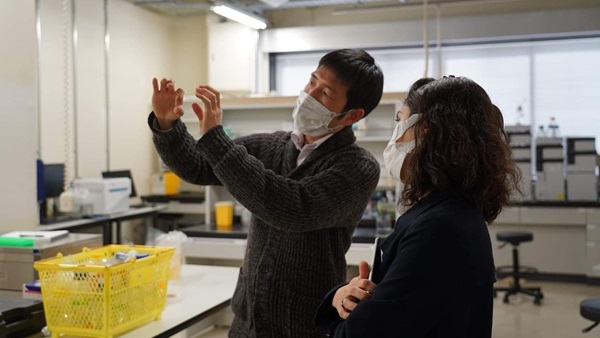
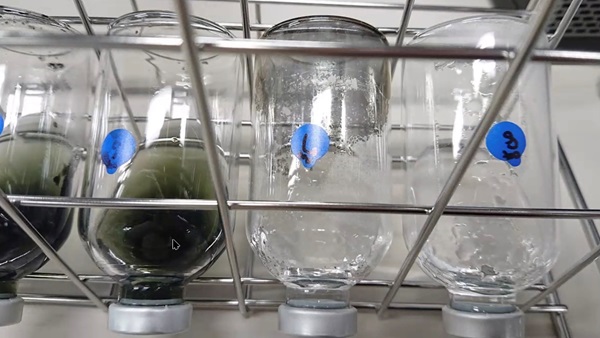
In a Zoom call with Dr Yasuhito Sekine, we discussed colours in other planets and moons and the research about the origin of life on Mars. Yasuhito showed me pictures of Titan moon, which inspired me with my colour choices in the artwork.
Lastly, I discussed with Natsumi Noda, and she presented her research on the role of ferrous saponite in the formation of sulfur-bearing organic matter, carbon cycles, and climate on early Mars.
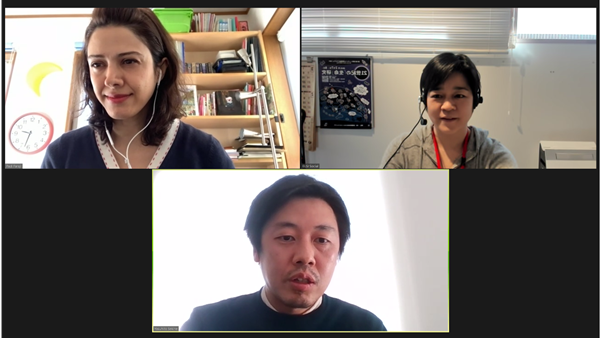
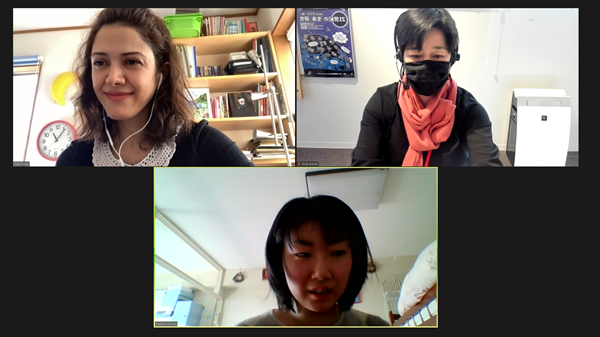
After getting inspiration from these fantastic scientists and putting together all my sketches, I began the first step in creating the artwork. I always start my work with a black canvas because I am inspired by Baroque period paintings, which has dark backgrounds.
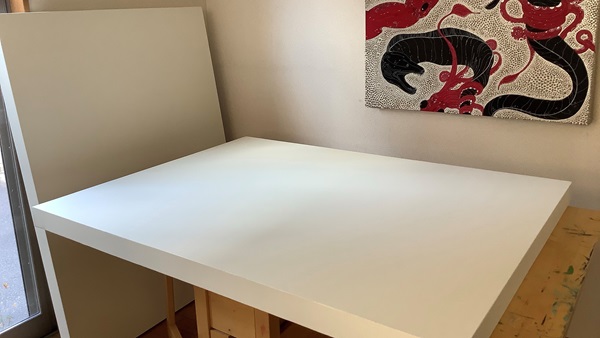
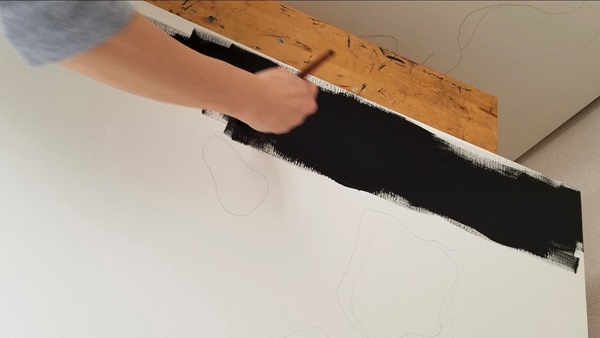
Medium & technique
The materials used in this piece are acrylic, gouache acrylic, and pen on canvas. I use toothpicks to create different textures on my artwork. My toothpicks are very special and dear to me. I start with a very thin toothpick and end up with a thick, cone-shaped toothpick covered with layers of paint. In order to create a spiky texture, each layer of paint is gently put on top of the other by a toothpick. In this artwork, the number of layers varies from 3 to 11. It took 12 to 13 hours of work a day for exactly 27 days to create this piece.
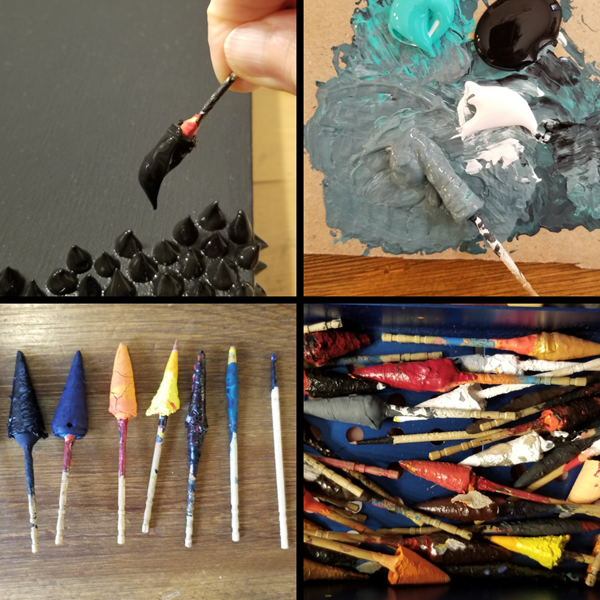
Collaboration outcome
Working with scientists gives a unique perspective of the universe, and they also comprehend the artistic approach of looking at fact-based studies, thinking about senses, colours, smells, etc. This collaboration outcome produced a conceptual artwork in the theme of 'the Origins of Life' by bringing an artistic element to the questions such as how was the Earth formed in our solar system? When, where, and how did the Earth-Life system come into existence? How did life on Earth evolve?
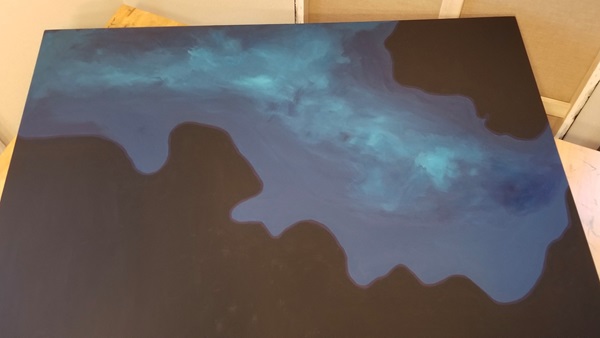
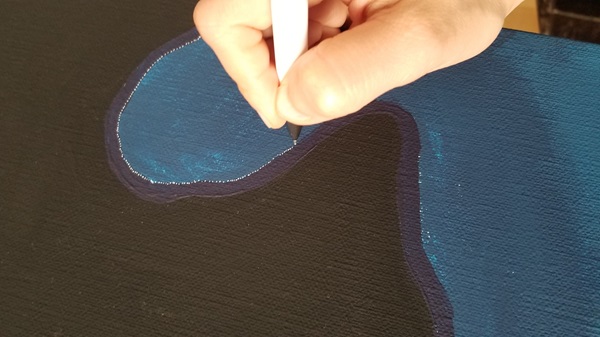
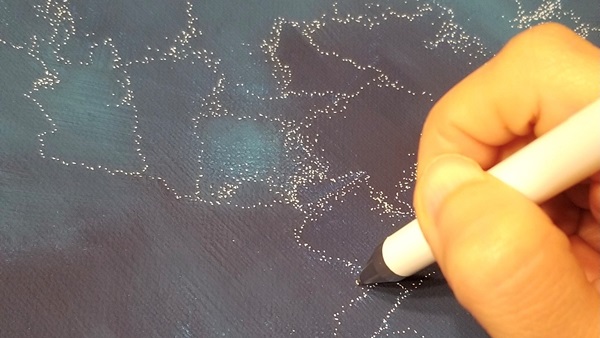
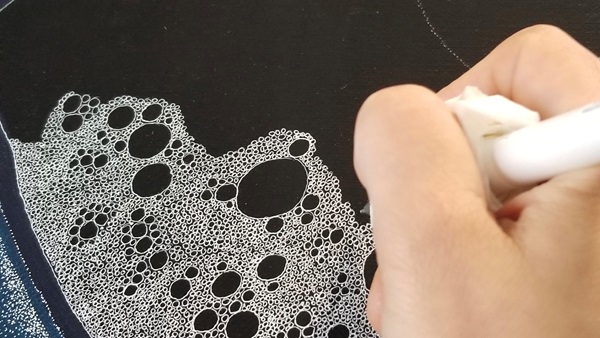
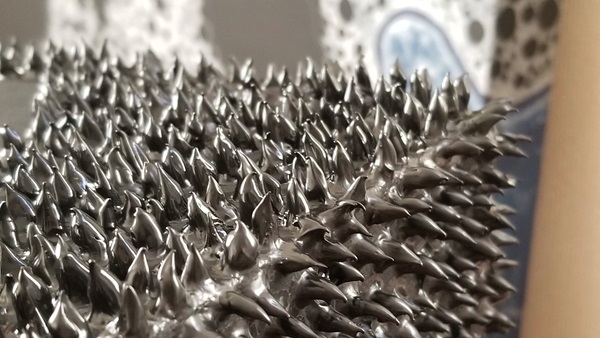
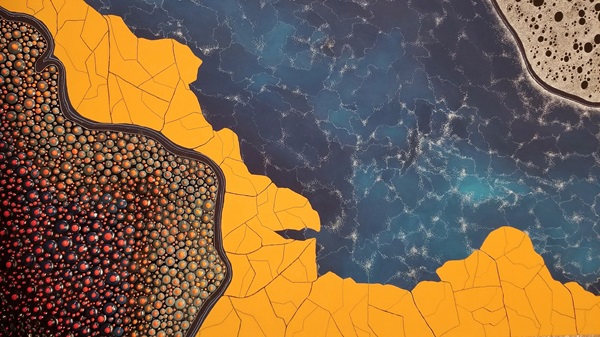
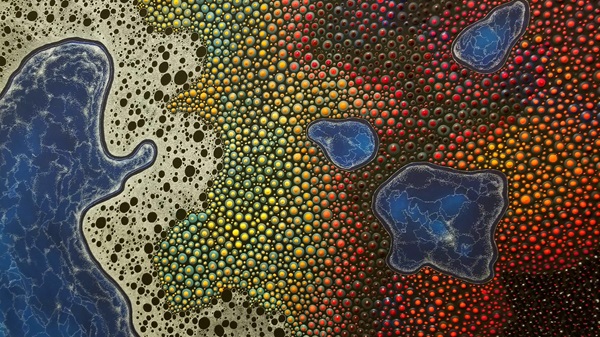
---
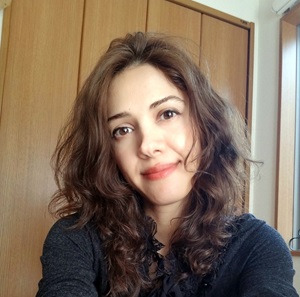
Author bio: Padi Faraji is an abstract artist originally from Iran, based in Japan. Faraji gets her inspiration from nature and space. Although her style is modern abstract, she is fascinated by the Baroque art period. Baroque painting's dark theatrical atmosphere and dynamic movements are what inspire Faraji in her artworks.
